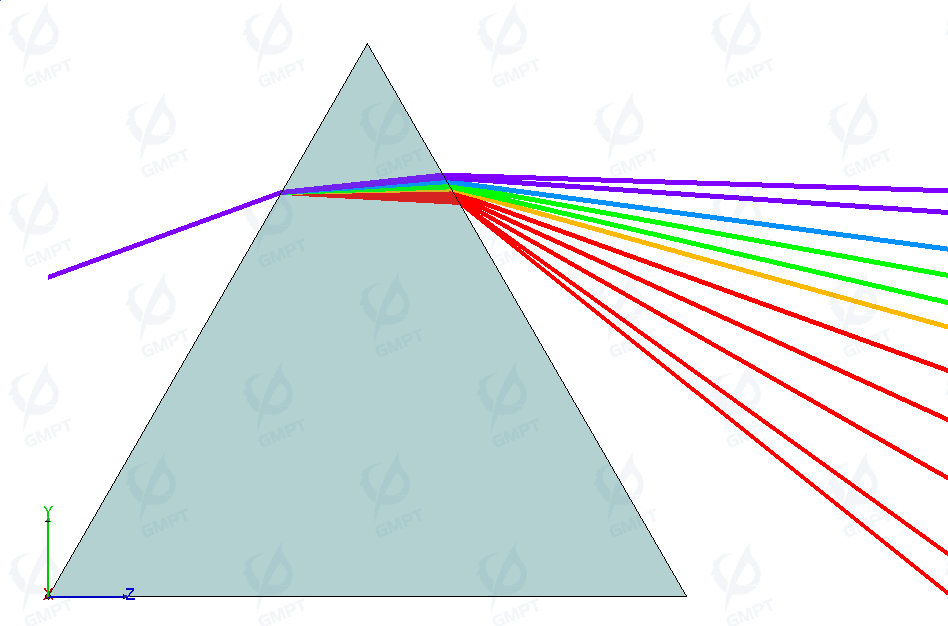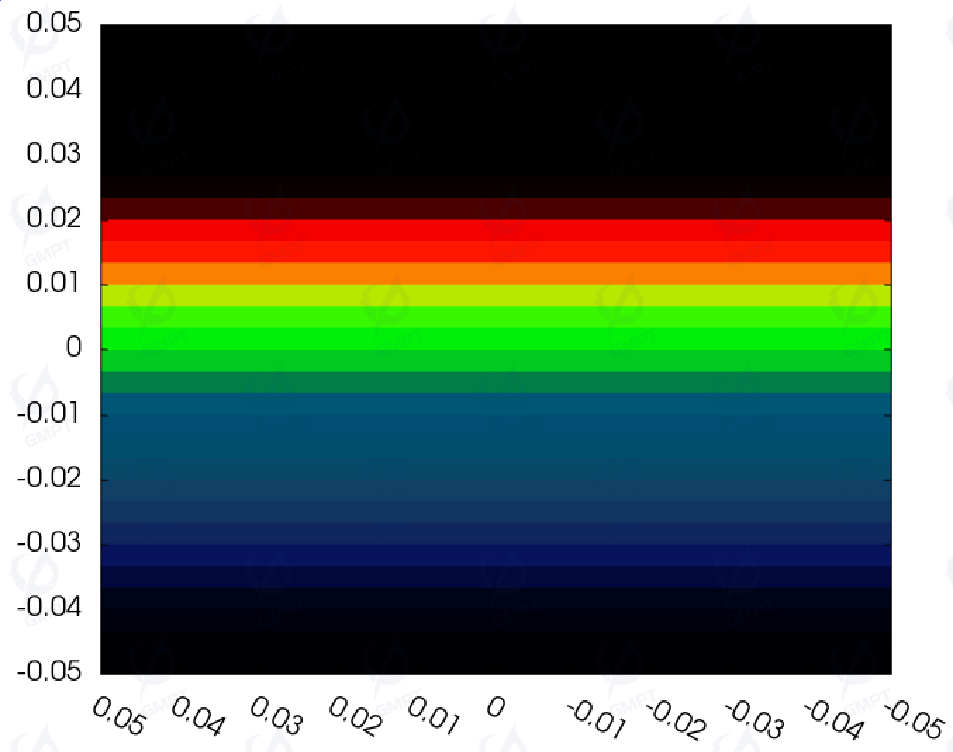Prism
GMPT October 2024
1. Application Background
A prism is an optical element made of transparent material in a polygonal shape, capable of altering the propagation direction and refractive angle of light through refraction and reflection. Prisms are commonly used for light dispersion, beam deflection, and correcting light aberration. By adjusting their shape and angles, prisms can disperse white light into various wavelengths, creating dispersion effects. They are widely applied in spectroscopic instruments and spectral analysis for dispersing light and measuring refractive indices.
- In spectroscopic analysis, prisms decompose incident white light into different wavelengths, enabling spectral separation and analysis. This is extensively used in fields such as physics and chemistry for material composition analysis and spectral measurement.
- In optical microscopy, prisms are utilized to change the propagation direction of light, facilitating sample observation and imaging. By deflecting light paths, prisms allow the observation of sample details from different angles and positions.
- In optical communication, prisms are employed for signal distribution and routing. By adjusting the prism's angle and position, light transmission directions and paths can be controlled, enabling flexible scheduling and distribution of optical signals.
Moreover, prisms are widely used in optical instruments, lasers, photographic lenses, and other fields. For instance, in projectors, prisms are used to focus and deflect light, enabling image projection. In photographic lenses, prisms adjust light paths to achieve focusing and imaging.
2. Case Study
2.1 Triangular Prism Spectroscopy
2.1.1 Background Introduction
In physical experiments, triangular prisms are often used for light dispersion studies. When light passes through a triangular prism, refraction and reflection occur, splitting the light into different wavelengths and angles. This allows researchers to study the properties of light and the variations in its wavelength.
In optical instruments, triangular prisms are utilized in devices such as spectrometers, lasers, and cameras. Spectrometers use triangular prisms to break light into spectral components of different wavelengths, enabling the analysis of material properties and composition. Lasers leverage triangular prisms to adjust and separate laser beams to meet the requirements of various applications. In cameras, triangular prisms separate light into different colors and capture these on individual pixels, enabling the production of colored images.
In optical communication, triangular prisms are applied for fiber optic connections and the modulation and demodulation of optical signals. Through refraction and reflection in the prism, optical signals can be transmitted at different angles, enabling connections between optical fibers and signal transmission. By altering the incident angle and wavelength of the optical signal, information can be encoded and decoded effectively.
2.1.2 Principles
2.1.3 Software Features
To design and simulate a triangular prism using Rayzen, the following parameters and features are required:
- Material and Optical Properties: Adding prism material parameters and surface optical properties, including refractive index and transmittance.
- Optical Simulation and Analysis Tools: Utilizing Rayzen’s optical simulation and analysis tools to accurately model the refraction and dispersion behavior of light through the triangular prism.
- System Layout: Rayzen also provides system layout tools to combine the triangular prism with other optical elements, building a complete optical system.
2.1.4 Simulation Result
 |
 |
| Observe dispersion phenomena using probe ray | Color Analysis on plane receiver after simulation |